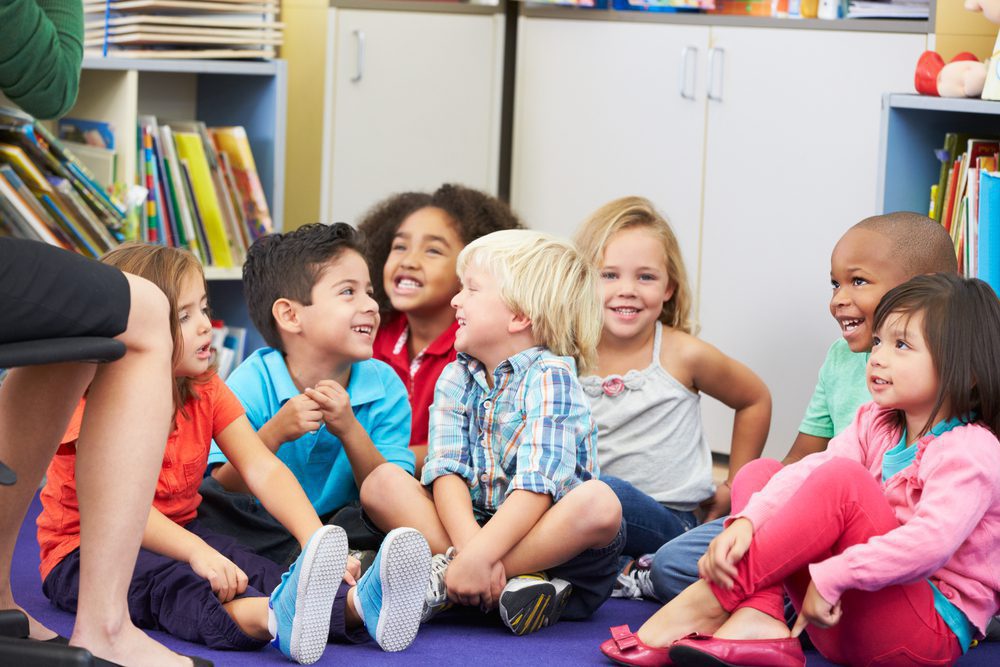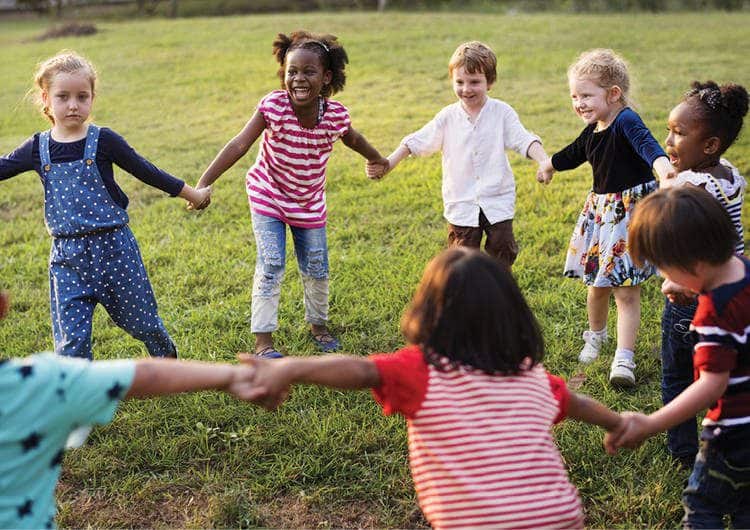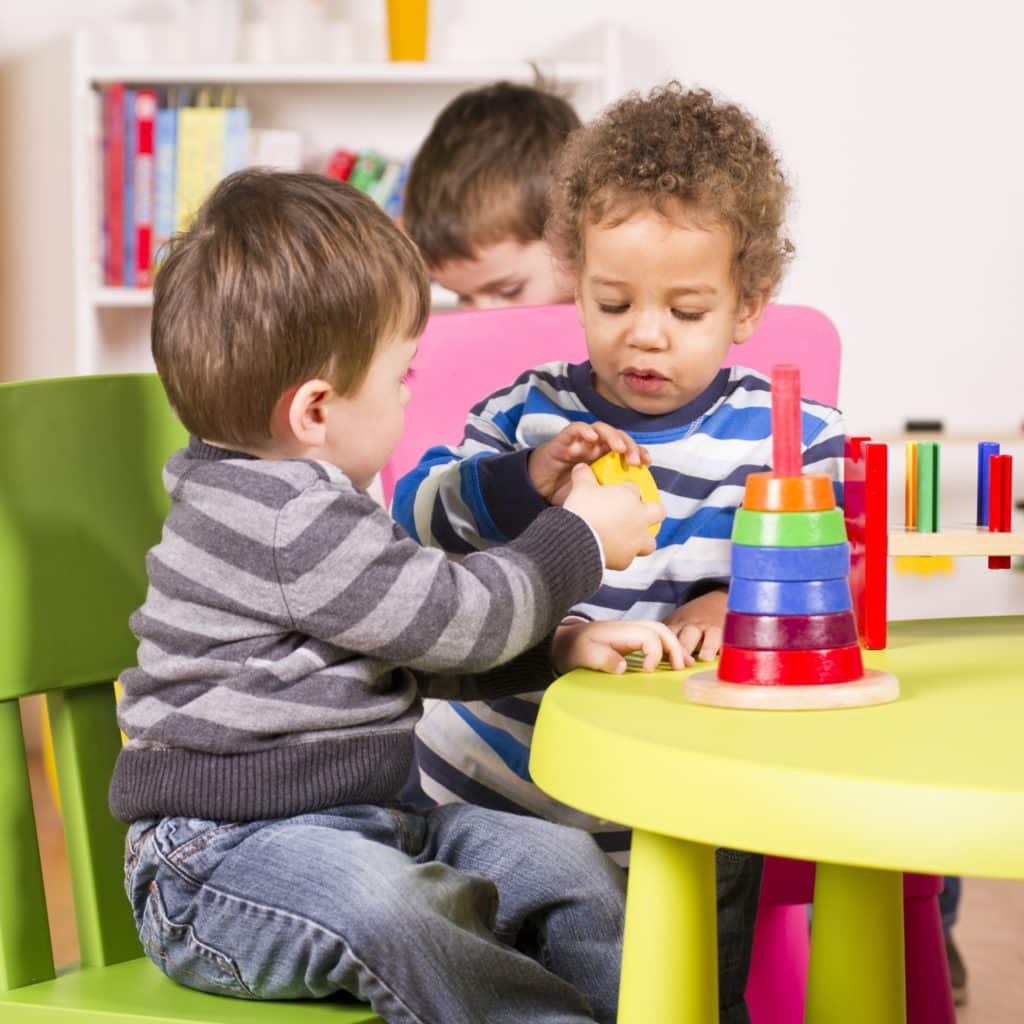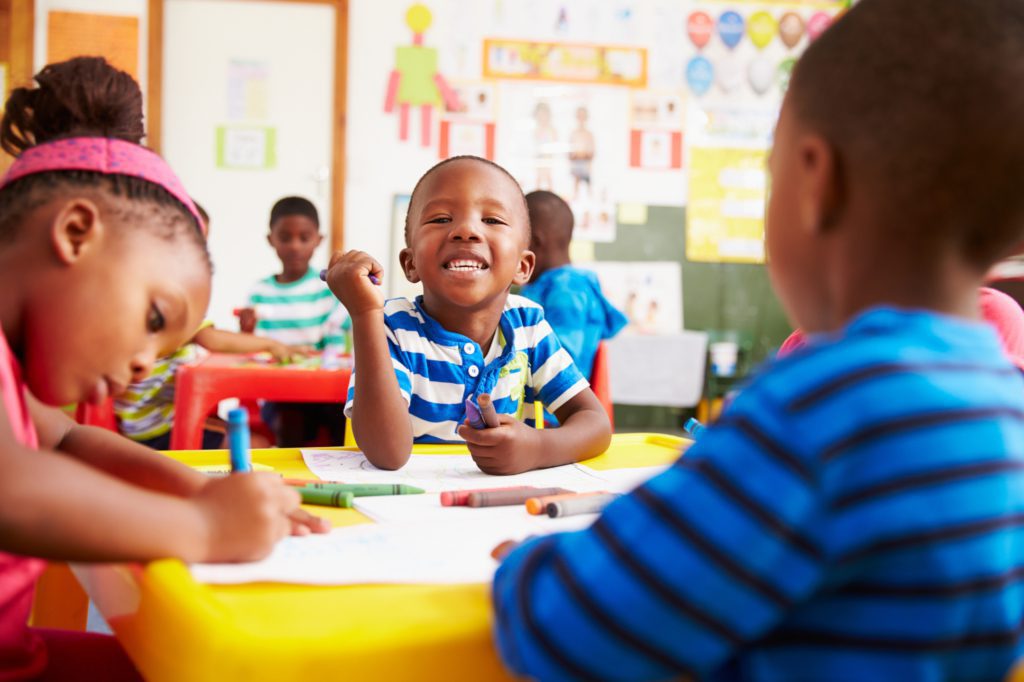Learn what you can do to make this big transition to preschool easier for your child. You’ll find a timeline for all the things that need to be done to help toddlers prepare for preschool and guidance on saying a “good good-bye” on your child’s first day.
If your child is starting preschool, you may be approaching this major milestone with conflicting emotions. You’re probably excited about all the fun (you hope) your child will have and the new friends he’ll make. At the same time, you may feel a little sad that your baby is venturing out into the big world without you. These emotions are normal. Your child is also bound to have a host of feelings about this transition, feeling proud to be a big kid but at the same time worried about being separated from you and starting something unfamiliar. Here are a few tips to help toddlers prepare for preschool.
Having Fun With Preschool Prep
There’s a lot you can do in the weeks before to get ready for the big day. But try to keep your efforts low-key. If you make too big a deal out of this milestone, your child may end up being more worried than excited. Here are some ideas to keep the focus on fun.
Use pretend play to help toddlers prepare for preschool.
Take turns being the parent, child, and teacher. Act out common daily routines, such as saying good-bye to mommy and/or daddy, taking off your coat, singing songs, reading stories, having Circle Time, playing outside, and taking naps. Reassure your child that preschool is a good place where she will have fun and learn. Answer her questions patiently. This helps children feel more in control which reduces their anxiety.
Read books about preschool.
There are many books about going to preschool available from the public library in your area. Choose several to share with your child over the summer before school starts. Talk about the story and how the characters are feeling. Ask how your child is feeling.
Make a game out of practicing self-help skills.
These skills include unzipping her coat, hanging her coat on a hook, putting on her backpack, fastening her shoes. For example, you might want to have a “race” with your child to see how quickly she can put on her shoes. When you play school together, you can give your child the chance to practice taking off her coat, zipping her backpack closed, and sitting “criss-cross applesauce.” If your child will be bringing lunch, pack it up one day before school starts and have a picnic together. This will give her the chance to practice unzipping her lunch box and unwrapping her sandwich—important skills for the first day!
Play at your new preschool.
Visit your child’s preschool together. Ask when you can tour the school with your child. Play on the school playground a few times before your child starts the program. These visits help toddlers prepare for preschool and increase their comfort with and confidence in this new setting.
Worries and Watching
Your child may also have some questions or concerns about starting preschool, either before or after he starts in the fall. Help him get ready with these two key strategies:
Listen to your child’s worries.
Although it’s tempting to quickly reassure your child and move on, it’s important to let your child know that his worries have been heard. No matter what they are, big or small, children’s worries about preschool can significantly influence their experience there. Will you remember to pick him up in the afternoon? Will his teacher be nice?
Let your child know it’s normal to feel happy, sad, excited, scared, or worried. Explain that starting something new can feel scary and that lots of people feel that way. It can be helpful to share a time when you started something new and how you felt. When you allow your child to share her worries, you can help her think through how to deal with them. For example, if she is worried about missing you, the two of you can make a book of family photos to keep in her cubby and look at when she is lonely.
Notice nonverbal messages.
As much as 3-year-olds may talk, most are not yet able to fully explain how they are feeling or what they are worried about. Your child may “act out” his worry by clinging, becoming withdrawn, or by being more aggressive. Another common reaction as children take a big move forward is to actually move backward in other areas. For example, if your child is fully potty trained, he may start have toileting accidents. He may ask that you feed or dress him even though he can do these things by himself.
It is natural to be frustrated by this regressed behavior, and you may be concerned that if you do these things for him, he won’t go back to doing them himself. In fact, letting him play this out often leads to children returning to their “big kid” selves sooner. Remember that your child is facing—and managing—a big change in his life. He may need more support, nurturing, and patience from you while he makes this transition.
The Preschool Countdown: What to Do and When
The last few weeks before starting preschool seem to fly by! As you begin the countdown to the first day, here are some things to keep in mind:
During the 2 Weeks Before Preschool Starts:
- Purchase a backpack together with your child. If possible, let your child choose it himself. This gives him a sense of control and emphasizes the fact that he is a “big kid” starting preschool.
- Label all items—backpack, jacket, shoes, blanket, teddy bear, etc.—with your child’s name and teacher’s name in permanent ink.
- Contact the preschool’s health professional if your child has medication that he or she takes on a daily basis. There will be special rules and forms to fill out for your child to receive medication at school.
- Figure out how your child will get to school and how she will come home. Talk to your child about the morning and afternoon routine so that she understands that she will be safe, okay, and cared for. Make sure your child meets her before- and/or after-school caregiver, if you are using one.
- Start using your child’s “school bedtime.” Children often go to bed later as the summer months, and longer days, kick in. Help your child get into a preschool schedule by keeping to his school bedtime, beginning about 2 weeks before school starts.
The Night Before Preschool:
- Answer any last-minute questions from your child.
- Let your child choose (weather- and school-appropriate) clothes for her first day.
- Make sure that your child goes to bed on time.
- Pick a bedtime that gives your child a good night’s rest before the first day. Keep the bedtime routine soothing and relaxing. Don’t focus too much (or at all!) on the first day of school unless he wants to.
The First Day:
- Wake up early enough so that you and your child don’t have to rush to get to preschool.
- Make breakfast for your child and, if possible, sit down to eat together—or at least talk with her as she eats and you get ready.
- Review the day’s routine (what preschool will be like, how your child will get to school/come home).
- Pack your child’s backpack together. If your child is bringing lunch, select foods that you know are his favorites. Having some familiarity on his first day is helpful as he adjusts to so many changes.
- Let your child choose a special stuffed animal or blanket to bring to school with her. These “loveys” can help children make the transition from home to school, and can also make naptime easier, too. You may want to send your child with a family photo or favorite book as well. These familiar objects can help if she feels lonely during the day.
Saying a Good Good-Bye
These strategies can help toddlers prepare for preschool and ease the jitters of separating on your child’s first day.
Plan to stay a little while.
Staying for 15-30 minutes on that first morning can help ease the transition. Together, the two of you can explore the classroom, meet some other children, play with a few toys. When you see that your child is comfortable, it is time to leave. If he is having a harder time getting engaged, you may want to ask your child’s teacher to stay with your child as you say good-bye so that when you leave, he can turn to another caring adult for support.
Keep your tone positive and upbeat.
Children pick up on the reactions of the trusted adults in their lives. So try not to look worried or sad, and don’t linger too long. Say a quick, upbeat good-bye and reassure your child that all will be well.
Think about creating a special good-bye routine.
For example, you can give your child a kiss on the palm to “hold” all day long. Or, the two of you can sing a special song together before you leave. Good-bye routines are comforting to children and help them understand and prepare for what will happen next.
Resist the Rescue.
Try not to run back in the classroom if you hear your child crying, as upsetting as this can be. This is a big change and your child may, quite understandably, feel sad and a little scared. But if you run back in, it sends the message that he is only okay if you are there and it is likely to prolong your child’s distress and make it harder for him to adapt. Rest assured, teachers have many years of experience with helping families make the shift to preschool. Instead, you can wait outside the classroom for a few minutes to ensure that all is well, or call the school later in the morning to check in.





